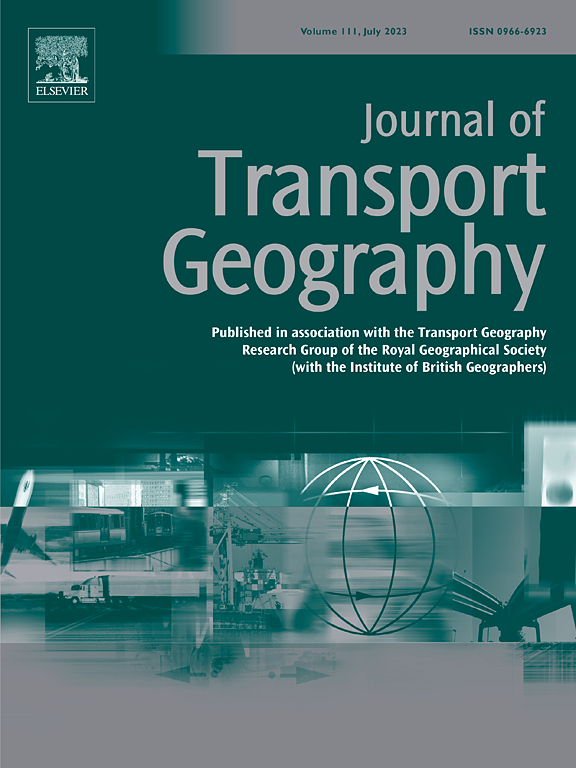Exploring factors influencing first-mile and last-mile connections to public transport from car users' perspective: Evidence from Greater Accra, Ghana
IF 5.7
2区 工程技术
Q1 ECONOMICS
引用次数: 0
Abstract
Public transport is commonly considered a solution to car dependence, aiming to address environmental degradation and social problems which car dependence creates in cities. However, first and last-mile connectivity problems are significant barriers to public transport ridership. Addressing first-mile and last-mile barriers may well reduce reliance on private cars and lead to a corresponding decrease in motorisation rates. Existing research has explored these factors; however, significant gaps remain as the approach overlooks explicit and implicit nuanced user experiences, especially those of car users. The scaler and relative influence of factors impacting first-mile and last-mile access, how car users perceive these issues and their impact on car usage are gaps to be explored. This study examines the factors influencing first and last-mile connections to public transport among car users who also use public transport. This study employs a framework to address this gap, integrating Exploratory Factor Analysis, Importance Performance Analysis and paired sample t-test to explore the interplay of first and last-mile factors. Findings indicate that safety while accessing bus stops, security at bus stops, pedestrian pathways or infrastructure, and proximity of bus stops, among other factors, are critical for improving overall satisfaction with first and last-mile connectivity for car users using public transport. More individuals walked when there was no alternative mode of transport, and individuals were more likely to choose ride-hailing for safety and convenience reasons. Implications of the results on practice and future research are explored.
从汽车使用者的角度探讨影响公共交通的第一英里和最后一英里连接的因素:来自加纳大阿克拉的证据
公共交通通常被认为是解决汽车依赖的一种方法,旨在解决汽车依赖在城市中造成的环境恶化和社会问题。然而,第一英里和最后一英里的连接问题是公共交通乘客的重大障碍。解决第一英里和最后一英里的障碍很可能会减少对私家车的依赖,并导致机动化率相应下降。现有的研究已经探索了这些因素;然而,由于该方法忽略了显性和隐性的微妙用户体验,特别是汽车用户的体验,因此仍然存在重大差距。影响第一英里和最后一英里出行的因素的规模和相对影响,汽车用户如何看待这些问题及其对汽车使用的影响,都是有待探索的空白。本研究考察了影响使用公共交通工具的汽车使用者与公共交通的第一英里和最后一英里连接的因素。本研究采用探索性因子分析、重要性绩效分析和配对样本t检验相结合的框架来解决这一差距,探讨第一英里和最后一英里因素的相互作用。研究结果表明,使用公交车站时的安全、公交车站、人行道或基础设施的安全、公交车站的邻近性以及其他因素,对于提高使用公共交通的汽车用户对第一英里和最后一英里连接性的总体满意度至关重要。在没有其他交通方式的情况下,更多的人选择步行,而且出于安全和方便的原因,人们更有可能选择叫车服务。本文还探讨了研究结果对实践和未来研究的启示。
本文章由计算机程序翻译,如有差异,请以英文原文为准。
求助全文
约1分钟内获得全文
求助全文
来源期刊

Journal of Transport Geography
Multiple-
CiteScore
11.50
自引率
11.50%
发文量
197
期刊介绍:
A major resurgence has occurred in transport geography in the wake of political and policy changes, huge transport infrastructure projects and responses to urban traffic congestion. The Journal of Transport Geography provides a central focus for developments in this rapidly expanding sub-discipline.
 求助内容:
求助内容: 应助结果提醒方式:
应助结果提醒方式:


